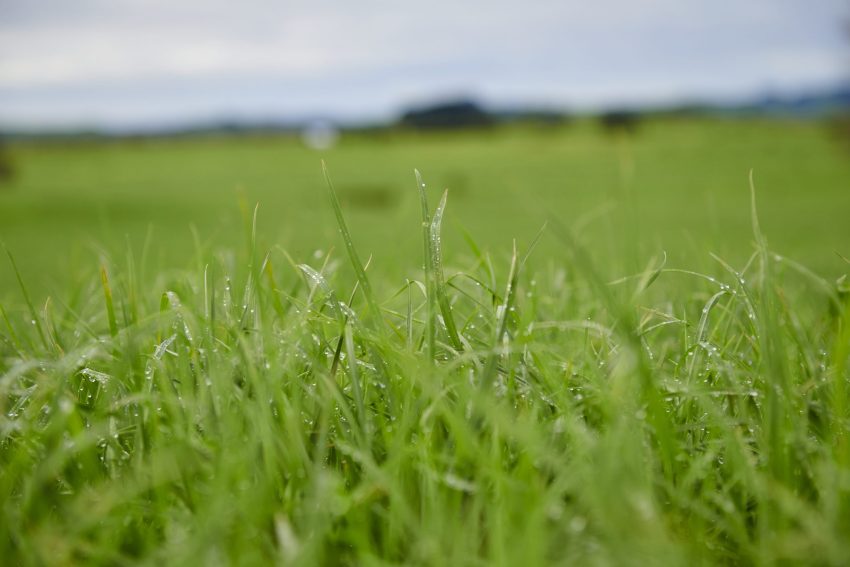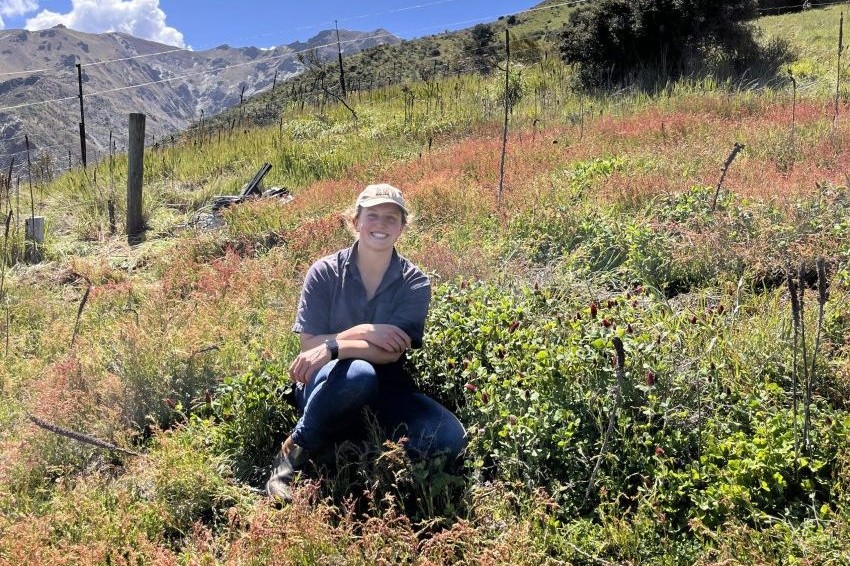Soil management and nutrient use were high on the agenda at FAR’s Crops 2020 event in December. Andrew Swallow reports.
Catch crops following winter-grazed forages can be a win-win for farm profit and the environment, delegates to FAR’s Crops 2020 event at Chertsey, Canterbury, heard.
Annual output from paddocks is increased, and risk of nutrient losses and soil damage reduced as catch crops mop up residual nitrogen, anchor soil and protect it from raindrop impact, in turn reducing risk of surface run-off and associated sediment and nutrient loss.
Lincoln Agritech’s Peter Carey presented 2018 and 2019 data from three Canterbury sites where the theory had been put into practice using oats, triticale or Italian ryegrass sown as soon as possible after kale or fodder beet crops. By mid to late November, July-sown plots of oats were yielding 10tDM/ha or more, in some cases without any additional fertiliser.
“At these levels green chop silage is very profitable,” Carey told the field day crowd. Valuing standing feed at 25c/kg DM margin over seed and fertiliser ranged from $800 to $2500/ha.
A key requirement is that the catch crop will germinate in cold soil, hence the use of oats, triticale or Italian ryegrass in the trials. Carey said oats appear to have an edge, but triticale was worth considering too.
Italian ryegrass mopped up less nitrogen and had lower yields, but could be a good option if looking to graze and/or regrass rather than harvest and sow another crop after the catch crop. Where paddocks were to go back into a winter feed any reduction in yield of that following winter feed due to delayed sowing was more than made up for in the extra feed harvested from the catch crop, he said.
“There’s an economic advantage as well as environmental … what you’re really doing is making your system more efficient.”
While the cereal catch crops took up nitrogen from 60 to 70cm down the soil profile, there wouldn’t always be enough nitrogen left after the main feed crop for the catch crop to flourish, so in some situations catch crops would benefit from fertiliser nitrogen in October.
Generally, the lighter the main feed crop, the more likely it was the following catch crop would need fertiliser, he said.
“If it’s a heavy winter crop there might be enough nitrogen to get the crop right through.”
Assessing catch crop colour and condition in mid-late October was the most practical way to determine need, he later told County-Wide, and in Southland trials where 40kgN/ha had been applied oat yield increased 1.5tDM/ha, with the host farmer reporting better quality silage resulting too.
Carey told the Crops 2020 audience that where possible, catch crops should be direct-drilled to avoid working soil. That’s despite the min-till plots generally yielding more than the direct-drilled in the Canterbury trials.
The problem with the min-till approach was that cultivation could cause a flush of nitrogen mineralisation which, in the event of heavy rain before the catch crop established, would be lost to groundwater, he said.
“So unless it’s very pugged, keep tillage to a minimum by direct-drilling.”
In the three winters (2018-2020) the trials were run in Canterbury it had never been a problem to get the catch crops sown at any of the sites, and with climate change such kind winters were more common, he added.
“Forty years ago soil temperatures were about a degree colder on average over winter.”
In Southland, with heavier soils and higher rainfall, catch crop establishment had proven more difficult but a spader-drill combination was proving a possible solution. With it, catch crop plots of oats following kale on heavy silt loam at Lumsden had been sown mid-June, whereas conventional minimum tillage cultivation and sowing wasn’t possible until mid-August. By mid November the spader-drilled plots yielded 7.4t/ha compared with 4.1t/ha for the min-till.
Once growing, a catch crop helps dry sodden soil and starts the process of repairing damaged structure. The removal of water further reduces leaching risk, drier soil being able to take more rain before reaching field capacity and drainage starting.
Those without irrigation in drier parts of the country would need to heed the soil drying effect of a catch crop because it could affect establishment and possibly yield of the following crop, Carey acknowledged.
As for sowing of the catch crop, Carey said do it as soon as possible after the main feed crop is grazed, backfencing and sowing part paddocks if need be.
Monitor and record soil quality
If you don’t already, start monitoring and recording your farm’s soil quality, and where necessary, taking steps to improve it, FAR’s Abie Horrocks and Dirk Wallace told visitors to Crops 2020.
Doing so was important for both returns and compliance, they said, Wallace illustrating the profit point with photos of two maize paddocks in Hawke’s Bay: one on compacted soil that returned $2000/ha, the other on well-structured soil that returned $4000/ha.
Meanwhile, for compliance, all farm environment plans should have a module on soil management and those were increasingly likely to be audited in future.
“So there are two good reasons to get out there and dig up some soil,” he said.
While there were many complicated ways to assess soil physical quality, it didn’t have to be that way and Wallace urged growers to use the three-step, one-page mini visual soil assessment* that Horrocks had developed for FAR.
“It’s real simple.”
Do it, record the results, and if the results aren’t satisfactory, take measures to improve quality, in turn recording those, he advised.
As a rule, reducing tillage would improve water-holding capacity and aggregate and structural stability, as would retaining and/or incorporating crop residues.
“Any organic matter return is better than nothing,” he said, urging growers to think of soil OM “like a bank account”.
But the fastest way to increase soil organic matter was by live root decay, which was what happened under permanent pasture, boosting aggregate stability, he added. Some species could also provide other soil structure benefits, such as turnips, which put down roots that penetrate soil pans.
Straw residues were a mixed blessing, locking up nitrogen short-term but greatly improving water infiltration rates and, once broken down, boosting organic matter.
If tillage had to be used, record the purpose, for example, to break a pan, or because the crop could not be established without it, he said, citing potatoes as an example.
Whatever measures were taken, improvements in soil physical quality would generally take considerable time, he said.
“Be patient, and be consistent. Keep measuring and monitoring.”
Horrocks said crop rotations should be planned to include phases that build soil organic matter and at least maintain it one rotation to the next, or preferably increase it. And like soil quality measuring and monitoring, that should be part of a farm environment plan.
Completing and maintaining such documents would help front foot regulatory and compliance requirements, she said.
“If you haven’t already done a farm environment plan it is something you will have to do in the very near future.”
Focus on soil loss hot spots
Where does water pond or sediment wash off on your farm?
“You’ve probably seen it so focus your efforts there and put it in your farm environment plan,” FAR’s Abie Horrocks urged delegates at Crops 2020 in a session headed ‘Getting soils to stay put’.
Cropping could be very hard on soil structure which, besides affecting productivity, created environmental risks that are increasingly under scrutiny from regulators, she warned.
Recognising problem areas and recording measures to address them in a farm environment plan would allow growers and their representatives to front foot issues, she said.
While some measures might be adopted on whole paddocks or farms, such as minimum tillage and building organic matter across the rotation to improve soil structure, others, such as set-backs from paddock boundaries, could be targeted to high risk or ‘critical source’ areas for sediment loss.
Horrocks says a Sustainable Farming Fund project under way in Canterbury and Hawke’s Bay, Good Management Practices for Setback Strips on Cropping Farms, should provide data that will allow growers to better target such measures and, hopefully, move away from the current set-width regulatory model.
Catch crop key points
Establish ASAP after grazing winter forage.
- Direct-drill if possible.
- Harvest early November.
- Oats or triticale highest yields.
- Italian ryegrass offers grazing option.
- Helps to dry soil, capture nitrogen, and repair structure.
- FAR’s DIY Mini Visual Soil Assessment guide is at www.far.org.nz/articles/1260




